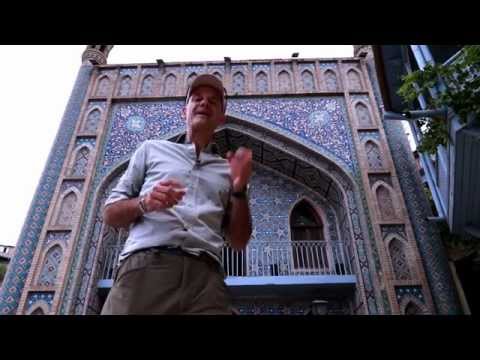
Nestled in the heart of Central Asia, Uzbekistan beckons travelers with its blend of ancient history, vibrant culture, and spectacular architecture. As a key stop on the historic Silk Road, Uzbekistan has played host to waves of conquerors and traders, each leaving behind a rich tapestry of cultural and architectural heritage. From the bustling bazaars of Tashkent to the majestic Registan in Samarkand, this guide will help you explore the best that Uzbekistan has to offer.
## Tashkent – The Gateway to Uzbekistan
Uzbekistan’s capital, Tashkent, is more than just a point of entry. This city combines modernity with ancient history and offers various attractions. Begin your journey at the Khast Imam Complex, home to one of the oldest known Quran manuscripts. The Chorsu Bazaar is a must-visit for anyone interested in experiencing local life and trying traditional foods like samsa (meat-stuffed pastries) and plov (a rice dish).
## Samarkand – The Jewel of the Silk Road
Samarkand is arguably one of Central Asia’s most spectacular cities. At its heart lies Registan Square, surrounded by three ornate madrasahs (Islamic schools) featuring dazzling Islamic architecture. Don’t miss Shah-i-Zinda, a stunning avenue of mausoleums adorned with turquoise tiles. Another highlight is Gur-e-Amir, where the legendary conqueror Timur (Tamerlane) is buried beneath a fluted dome interlaced with gold.
## Bukhara – A Living Museum
Bukhara feels like stepping back in time with over a thousand years of history preserved in its cityscape. The Ark Fortress offers insights into a bygone era while the Kalon Minaret stands as a testament to architectural prowess. Spend some time at Lyabi-Hauz for relaxation around its shaded pool and historic madrasahs.
## Khiva – A Desert Oasis
Khiva gives you a glimpse into what an ancient Silk Road khanate might have looked like. Its well-preserved Itchan Kala (inner city) is encircled by brick walls crowned with watchtowers and houses numerous architectural treasures including the Djuma Mosque with its intricately carved wooden columns.
## The Silk Road Echoes in Termez
The southern city Termez does not often make it onto standard tourist itineraries but offers profound historical insights into Buddhist heritage sites alongside Islamic architecture – an amalgamation representative of Uzbekistan’s layered history.
## Natural Wonders and Outdoor Adventures
Beyond cities filled with grandiose structures lies Uzbekistan’s lesser-known natural beauty. The Chimgan Mountains are perfect for hiking, horse riding, and skiing in winter months. Meanwhile, Aral Sea tours highlight environmental challenges but also showcase resilience through emerging eco-tourism initiatives.
## Practical Information for Travelers
### Visa Requirements
Most visitors will need a visa which can easily be applied for online through Uzbekistan’s e-visa portal.
### Best Time to Visit
Spring (April to June) and fall (September to October) provide pleasant weather ideal for exploring both cities and nature.
### Cultural Considerations
Uzbek culture is warm but conservative; modest dress is recommended especially when visiting religious sites.
### Language
Uzbek is widely spoken; Russian serves as a lingua franca especially in cities while English usage is growing among younger people linked largely to tourism-related services.
### Currency
The currency used here is Uzbekistani Som (UZS). While larger hotels and some restaurants accept credit cards, cash remains king especially in smaller towns or bazaars.
With its stunning Silk Road relics still standing proudly amid evolving urban landscapes intertwined with untouched natural vistas – Uzbekistan indeed offers something unique for every traveler willing to explore this vibrant part of Central Asia.
